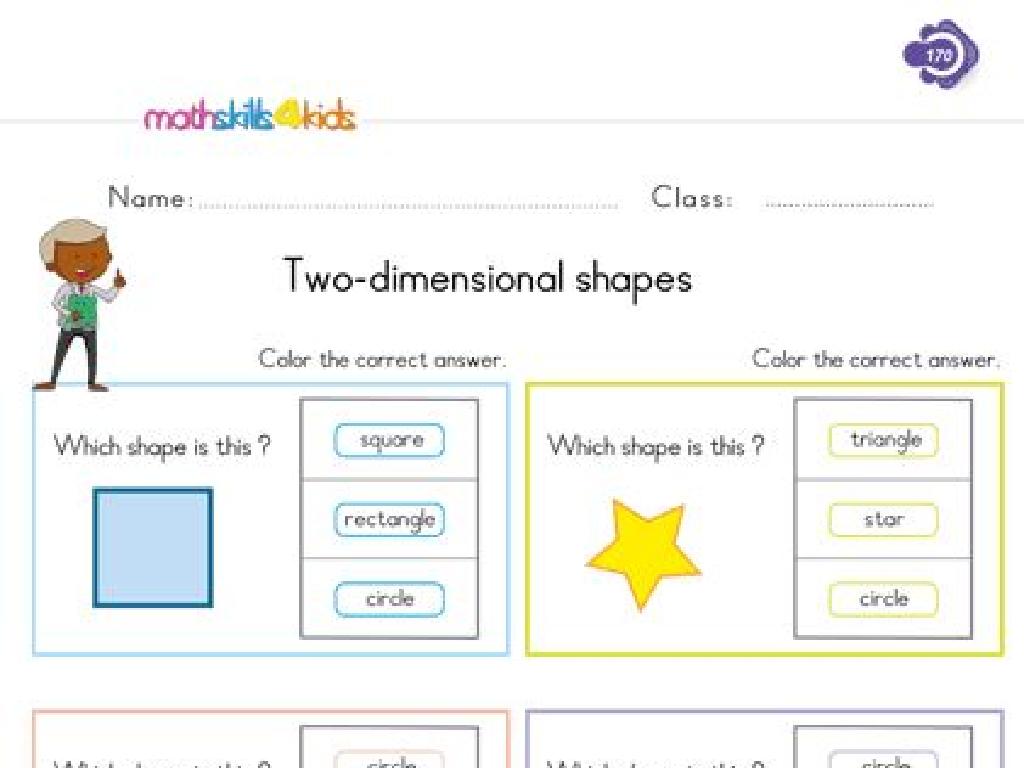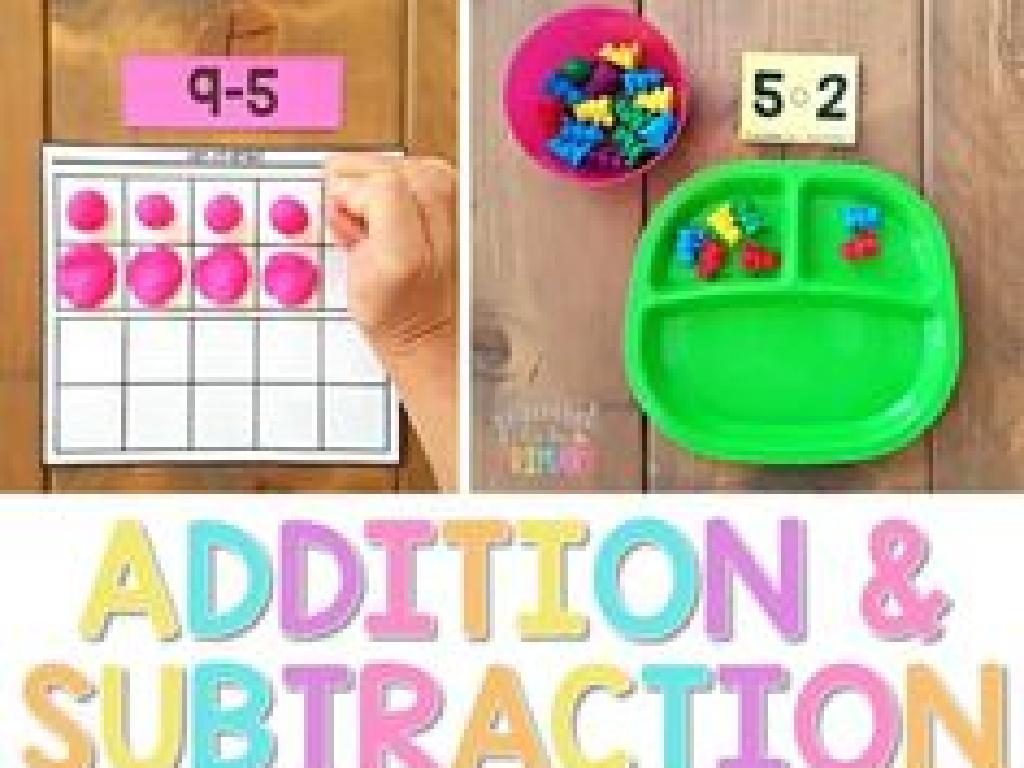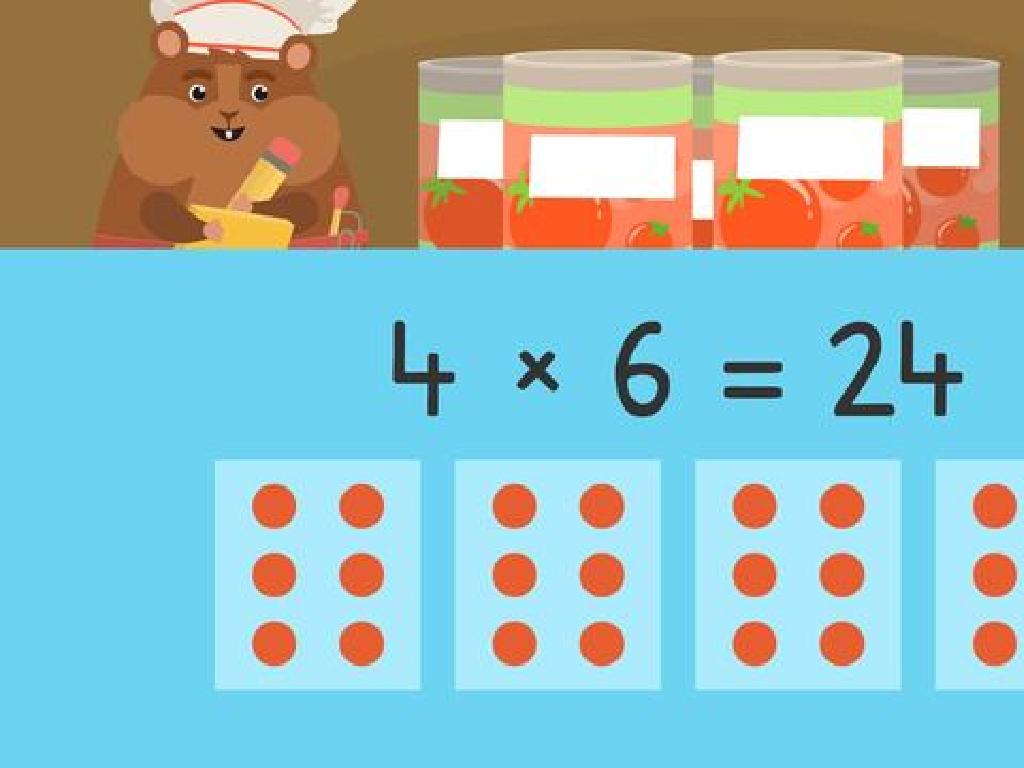Understand An Experimental Protocol About Plant Growth
Subject: Science
Grade: Eighth grade
Topic: Designing Experiments
Please LOG IN to download the presentation. Access is available to registered users only.
View More Content
Experimental Design: Plant Growth
– Grasp the Scientific Method
– A series of steps for a valid experiment
– Today’s Focus: Plant Growth
– Investigating factors affecting plant growth
– Controlled Experiments
– Keeping variables constant except one
– Why Controls Matter
– Ensures reliable and valid results
|
This slide introduces students to the concept of experimental design with a focus on plant growth. Begin with a review of the Scientific Method, emphasizing its importance as a step-by-step process that guides scientific inquiry. Highlight today’s focus on plant growth experiments, where students will investigate how different variables affect the growth of plants. Stress the significance of controlled experiments, where all variables except the one being tested are kept constant. This is crucial for obtaining reliable data. Explain that understanding why controls are necessary will help students design their own experiments and interpret results accurately. Encourage students to think of variables that might affect plant growth, such as light, water, soil type, and temperature.
Understanding Experimental Protocols in Plant Growth
– Define experimental protocol
– A set of procedures to conduct an experiment
– Outline key components
– Hypothesis, materials, procedure, observation
– Explain replication importance
– Replication confirms results’ reliability
– Discuss consistency in experiments
– Consistency ensures accurate comparisons
|
An experimental protocol is a detailed plan that outlines the steps and considerations of a scientific experiment. It includes formulating a hypothesis, listing the required materials, describing the procedure, and noting the observations. Emphasize the importance of replication in experiments to verify results and the need for consistency to ensure that the results are comparable and reliable. In the context of plant growth, students should understand how these components help in designing experiments to test the effects of different variables on plant development. Encourage students to think critically about how they would set up their own plant growth experiment, considering these key components.
Formulating a Hypothesis in Plant Growth Experiments
– Define a hypothesis
– A hypothesis is a proposed explanation made on the basis of limited evidence.
– Crafting a testable hypothesis
– It should be clear, focused, and measurable, e.g., ‘If I water plants more, they will grow taller.’
– Examples: effective vs. ineffective
– Good: ‘If soil pH affects plant growth, then altering pH will change growth rate.’ Bad: ‘I like blue flowers.’
– Hypothesis testing in experiments
– We test hypotheses by conducting experiments and analyzing the results.
|
This slide introduces the concept of a hypothesis and its role in scientific experiments, specifically in the context of plant growth. A hypothesis is an educated guess that provides a starting point for investigation. It’s crucial for students to understand that a good hypothesis is not just a random guess; it should be based on observations and knowledge. It must be testable through experimentation. Provide examples of good hypotheses that are clear and have variables that can be measured, and contrast them with bad hypotheses that are vague or based on personal preferences. Emphasize the importance of being able to test the hypothesis with an experiment, which will lead to the next part of the lesson on experimental design and methodology.
Plant Growth Experiment: Setup & Safety
– List experiment materials
– Pots, soil, seeds, water, ruler, notebook, and a camera or smartphone for photos.
– Step-by-step setup guide
– Arrange pots, label them, plant seeds at equal depths, and water them.
– Follow safety precautions
– Wear gloves, avoid ingestion of materials, and keep a clean workspace.
– Record observations systematically
|
This slide is designed to guide students through the initial phase of setting up their plant growth experiment. Start by providing a comprehensive list of materials needed, ensuring all students have access to these items. The step-by-step setup guide should be clear and easy to follow, emphasizing the importance of consistency in how seeds are planted to ensure valid results. Safety is paramount; students should be aware of how to conduct the experiment without risks, such as wearing protective gloves and keeping their workspace tidy to prevent accidents. Lastly, instruct students on how to record their observations in a systematic manner, which is crucial for analyzing the results later. This could include daily measurements, photographic evidence, and notes on plant health. The teacher’s notes should contain additional safety guidelines and suggestions for different ways students can document their experiment’s progress.
Plant Growth Experiment Protocol
– Follow detailed experiment steps
– Steps include soil prep, planting, watering schedule.
– Adhere strictly to the procedure
– Accuracy ensures reliable results.
– Observe and note plant changes
– Monitor height, leaf number, color changes.
– Record data systematically
– Use tables or journals for daily entries.
|
This slide outlines the experimental protocol for a plant growth experiment. It’s crucial for students to understand the importance of following each step meticulously to ensure the experiment’s validity. Emphasize the need for precision in carrying out the procedure, as this will affect the reliability of their results. Students should be observant of various aspects of plant growth, such as height, number of leaves, and any changes in color or texture. They should record their observations regularly and systematically, using tools like tables or a science journal, to track the plant’s development over time. This will help them in analyzing the data later and drawing conclusions. Encourage students to ask questions if any step is unclear and remind them that careful observation and recording are as important as the experimental steps themselves.
Observations and Results: Plant Growth
– Techniques for observing plant growth
– Measure height, count leaves, note color changes
– Methods for accurate data recording
– Use a structured data table with dates and metrics
– Interpreting results of the experiment
– Analyze growth patterns and compare with controls
– Anticipating possible outcomes
– Consider variables like light, water, and soil type
|
This slide aims to guide students through the process of observing and recording data in a plant growth experiment. Emphasize the importance of consistent and precise measurements, such as tracking the height, leaf count, and any color changes in the plants. Encourage the use of a structured data table to record observations methodically, including dates and specific metrics. Teach students how to interpret the results by analyzing growth patterns and comparing them with control groups or expected outcomes. Discuss the importance of considering various variables that could affect plant growth, such as light exposure, water frequency, and soil composition. This will help students understand that experimental results can vary based on different conditions and that predicting possible outcomes is a critical part of designing experiments.
Analyzing Data: From Experiment to Insight
– Transform data into graphs/charts
– Use bar graphs or line charts to visualize growth patterns
– Analyze patterns and anomalies
– Look for unexpected results or deviations in plant growth
– Draw conclusions from data
– What does the data tell us about plant growth conditions?
– Relate findings to hypothesis
– Does the data support or refute our initial predictions?
|
This slide focuses on the critical steps of data analysis in a scientific experiment about plant growth. Students should learn how to take raw data and turn it into visual representations like graphs and charts, which make patterns and trends easier to identify. They should look for both expected patterns and any anomalies that could indicate errors or unexpected factors in the experiment. Drawing conclusions involves interpreting the data to understand what it says about the conditions under which plants grow best. Finally, students should learn to compare their conclusions with their original hypothesis to see if their predictions were accurate. This process helps students develop critical thinking and analytical skills.
Class Activity: Design Your Plant Growth Experiment!
– Form groups and discuss hypotheses
– List materials and outline procedures
– Consider variables like sunlight, water, soil type, and plant species.
– Create a presentation of your design
– Use slides or posters to illustrate your experiment.
– Share and critique with the class
– Provide constructive feedback to peers.
|
This activity encourages collaborative learning and critical thinking as students design their own experiments on plant growth. In their groups, students should discuss and agree upon a hypothesis related to plant growth factors. They will then need to plan what materials they’ll require and the steps they’ll take to conduct the experiment. Each group will prepare a short presentation to explain their proposed experimental design to the class. After presentations, students will engage in a feedback session to critique each other’s designs constructively. As a teacher, facilitate discussions, ensure all students participate, and guide them to consider all necessary variables for a fair test. Possible activities could include testing the effect of different soil types, amounts of water, light exposure, or using various plant species to observe growth differences.
Conclusion: The Role of Experiments in Science
– Recap experimental protocols
– Significance of scientific experiments
– Experiments validate hypotheses and contribute to scientific knowledge.
– Open floor for questions
– Encourage curiosity and clarification
– Asking questions deepens understanding and addresses uncertainties.
|
This slide aims to wrap up the session on experimental protocols related to plant growth. Begin by summarizing the steps and procedures discussed during the class. Emphasize the importance of experimentation in the scientific process, how it helps validate theories, and contributes to our understanding of the natural world. Open the floor for questions, encouraging students to seek clarification on any aspect of the experiment they may find confusing. This is also an opportunity to foster a scientific mindset by prompting them to ask their own questions that could lead to further experimentation. The teacher should be prepared to facilitate the discussion, provide examples of how questioning leads to scientific breakthroughs, and ensure that all students leave with a clear understanding of the day’s material.






